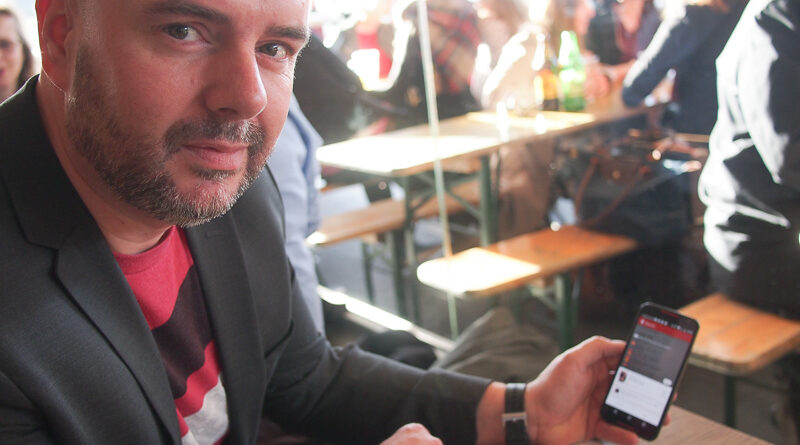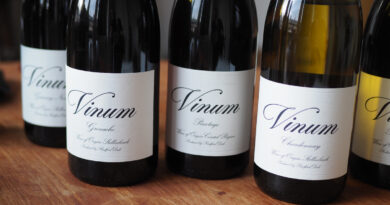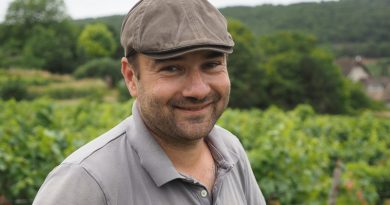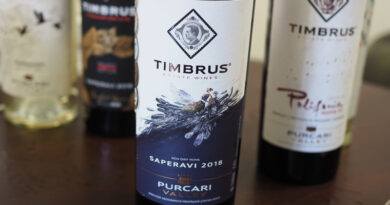Vivino: Heini Zacchariassen on how his app has changed the world of wine
Although its only just over a decade old, Vivino already has 53 million users, and is trusted by many as a way of navigating the complex world of wine. Founder Heini Zacchariassen explains how the emergence of the smartphone and the sluggishness of the wine industry to recognize its potential opened up an opportunity for tech, and Vivino was the tool that best made use of this opportunity.
Vivino is a remarkable wine success story, in an industry often criticised for its lack of innovation. It was founded just over a decade ago by Heini Zachariassen, and with its latest round of fundraising it’s valued at between $600 m and $800 m. Heini has recently stepped down and appointed a new CEO to help take Vivino to the next level, but he’s still a board member and acts as the face of the company. One of his passions is entrepreneurship, and among other pursuits he’s now spending time on a YouTube channel for startups (Raw Startup: helping builders change the world https://www.youtube.com/c/RawStartup).
Heini is 49 years old, has 3 children, and lives in Copenhagen, Denmark. He grew up in the Faroe Islands, located between Norway and Iceland, north of Scotland. ‘I don’t think you can get much further away from the wine business,’ he says. With a population of just 50 000 people, and its own language and an obsession with fish, ‘I felt like I landed in the wrong place,’ he says. ‘I was just interested in technology.’
One of Heini’s mantras is that it’s the courageous who change the world. ‘There’s always someone who you think is better,’ he says. ‘But you have to have the courage to do it.’ And that’s what he did with Vivino. When he knew Vivino was going to be something, he moved with his family to California in 2013, and stayed there until 2020. ‘The biggest market in the world is the USA,’ he says, and that’s where he knew he had to be for Vivino to reach its potential. ‘If you look at the apps you have on your phone, many are from a very specific area – Silicon Valley. If you want to win the world, you have to win the USA first. We know now that the competition we had back then is not there any more.’
So why Vivino? ‘The reason Vivino exists is because wine is complicated,’ he says. ‘When you stand in front of an aisle of wine it is difficult. Vivino makes it easy: you can take a picture of any bottle of wine in the world and it will tell you what it is.’
But there were three key things that happened to made this project possible. These three factors are important for any startup.
The first thing is a shift in technology or legislation – something that really changes in an industry. Smartphones changed the game here. The iPhone was invented in 2007, and the app store came along in 2010. This created the opportunity. ‘The product we do can’t really be done properly without a smartphone,’ he says.
Indeed, it’s hard to overstate the impact of the smartphone. ‘It’s a unique situation that happened,’ says Heini. ‘This happened incredibly fast – it was a big change in the entire world.’
At the same time, people were also getting more used to crowd-sourced reviews. ‘The world changed from a world ruled by experts to a world where casual consumers were able to rate things,’ he says, citing the likes of Yelp, IMDb and TripAdvisor.
The second pre-requisite after the shift in technology or legislation is that the industry doesn’t follow the shift, or is slow to shift. Surprisingly, you might think, this failure to move is usually what happens in any industry, and the wine trade didn’t respond fast to smart phones. ‘Usually the industry isn’t good at following any change.’
There was also a problem in wine. ‘We think than the rating system was totally broken,’ says Heini. ‘Most of the wines weren’t rated at all. The likes of Robert Parker and Wine Spectator would rate very few of the wines – 10-20% of them. And they were usually rated by one person. And Parker came up with an obscure 50-100 point scale – it’s a really strange system. A lot of people swear by it still but we wanted to use a system that is used more widely.’
And the advantage of the crowd-sourced rating is the sheer volume, allowing Vivino to rate almost all the wines out there. ‘Someone like Robert Parker would rate 20 000 wines a year. We do 100 000 a day. We can rate 99% of the wines.’
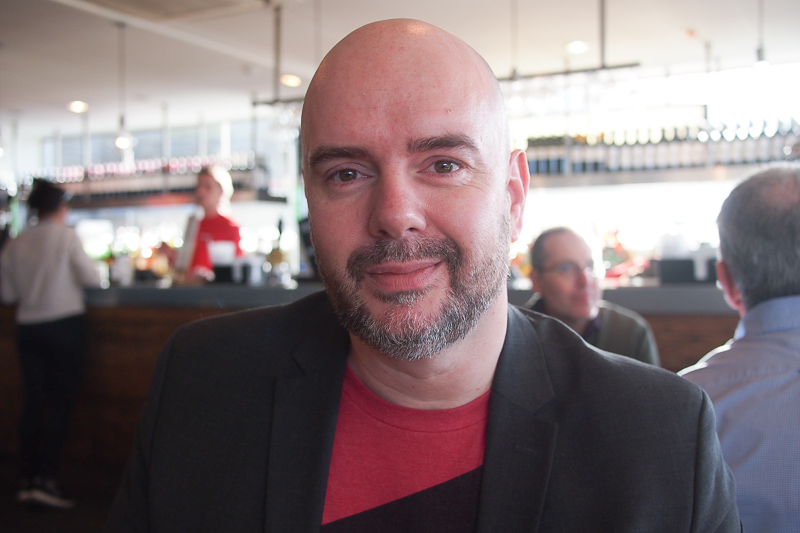
But surely the professional critic reviews are better quality than the crowd-sourced ones? Heini wanted to test them. ‘We did some research on the data,’ he said. ‘We took 5000 wines that were rated by both Robert Parker/The Wine Spectator and Vivino. What they found is that the Vivino ratings correlated better with experts, than the experts did with each other. ‘The crowd-sourced ratings are incredibly strong.’
Would users end up scoring excessively highly or lowly, and would that affect their quality? Vivino looked at the spread of the ratings too, and they form a nice-looking normal distribution with an average of 3.6.
The third disruption requirement, of course, is to find a product that exploits this industry shift. ‘For us it was the Vivino app,’ says Heini. The big question for him was how he should start building this product. ‘A lot of people had tried to do this,’ he says. ‘We weren’t first movers and there was a lot of competition initially.’
The Vivino philosophy was to build the smallest possible thing. ‘Don’t try and go big.’ And release fast. ‘A lot of people don’t want to show a product that isn’t perfect,’ he says, ‘but you have to release fast.’ The attitude of the team was release fast, fail fast, and learn fast. ‘Try things out and, if you miss, do something else. Every single week we sent a new product out and listened.’
Initially, they had to populate the baby app with labels and data. One of the ways they did this was a competition app, where users were encouraged to send in wine labels, competing with other users, in order to win a corkscrew. They had to negotiate with Apple so they could get this rather strange app on the app store.
‘If you have clear priorities, then you say certain things you just can’t do,’ says Heini. Spending money on making their app look gorgeous was a luxury they couldn’t afford. ‘We couldn’t be beautiful. The app we built in the early days was not beautiful.’
Moving fast is also important. ‘One of the dangers is the clone, if you don’t move fast enough. You have to think about how fast the world moves today. If you don’t move fast you are going to lose, but when you move fast sometimes you will make mistakes.’ He adds, ‘If a lot of shifts are happening in the world people get the same ideas at the same time.’
He has advice about patience, too. ‘Be short term impatient but long term impatient. You run like crazy, but know it will take 5 years.’
Vivino took 12 months to get to 1000 app downloads, and 30 months to 1 million. It took 5 years to get to 100 million scans, but from 1 billion scans to 1.1 billion scans, the same numerical growth, took just 2 months. The app has 53 million users, and 1.7 billion pictures of wines. 14.2 million different wines are on it.
Of course, the app is free to use. All the investment in developing Vivino and pursuing a radical growth strategy to see off the competition is with a view to making a product that is profitable. But Vivino, like many tech solutions, is that modern oddity that seems to be becoming the norm: the main purpose of the app, which is allowing customers to navigate the world of wine, is never going to be how it makes its money. Instead, the app serves to lure in millions of users, get their attention, get their data, and then make money off the back of this. The size of the wine market is $417 billion globally, and this is what Vivino has its eyes on. Revenue streams are commissions on third-party wine sales (Vivino doesn’t act as a wine merchant), selling data, and advertising. They are now selling wine through the app in 18 different countries, but it is not as simple selling wine as it is other products because of the difficulty of crossing legislative boundaries (state or national borders), restrictions on alcohol sales, taxation and duty issues, and falling foul of the existing trade structure (most wineries have established and exclusive routes to market). Besides, wine is bulky and breakable, so there’s a reliance on logistics partners who are sometimes not great, and who are often expensive.
It has benefited from Covid. ‘The pandemic led to increased interest in online wine buying,’ says Heini. ‘On March 20 2020 things started going crazy, we started seeing extreme interest in demand.’ Normally, each day about 20 000 people install the app, and about 500 of them start buying. Now they are up to 1000 new buyers a day. ‘Something happened in the pandemic.’
Vivino’s wine sales in 2020 were $265 million, up 103% from 2019 ($131 m).
‘There are fewer and fewer bookstores out there because the business doesn’t make sense,’ says Heini. ‘Amazon came along and offered infinite supply, ratings and reviews and better prices. This happened for books, and we think we can change this for wine. We offer a massive selection, reviews and ratings, personalized recommendations and usually better prices.’ He concludes, ‘people are going to drink better wine and that’s why we are here.’
Heini was speaking at the wine and communication conference in Pamplona, November 2021.

